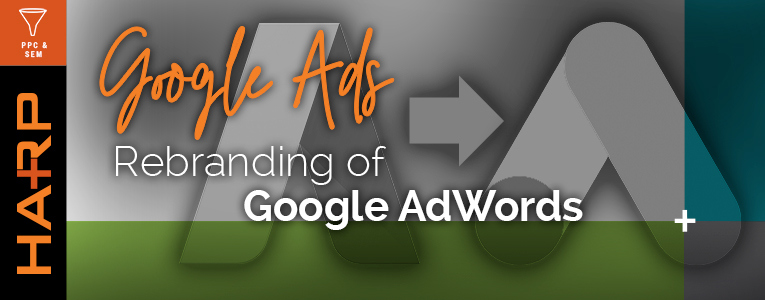Google Adwords has undergone a major rebrand: one that allows marketers to connect with prospects through varying ad formats at every step of their purchasing process.
Prior to this rebrand, advertisers promoted online businesses on Google under the AdWords platform. Originally developed to deliver valuable ads that were useful and relevant to potential customers, Google AdWords has evolved throughout the years to meet advertiser’s needs.
One of the needs AdWords has responded to is the continued rise of mobile use. This is where targeting consumers goes beyond Google Search. For this reason, Google saw a rebranding opportunity to showcase their advertising products in a more connected way.
And thus, Google AdWords became Google Ads.
Sridhar Ramaswamy, Senior Vice President of Ads & Commerce at Google, said that the rebranding is an indication of where the product is heading.
The goal is to help advertisers and publishers of all sizes choose the right solutions for their businesses.
What the rebranding of Google AdWords means for marketers
These updates are more than just a name change. Google is launching Smart Campaigns, which will become the default mode for small business advertisers.
With Smart Campaigns, advertisers will be able to identify the actions they are prioritizing. Whether it’s phone calls, store visits, or purchases, Google Ads will then use machine learning to optimize the images, text, and targeting to drive more of those actions.
Additionally, smart campaigns opens the door for advertisers to buy on all Google platforms. This includes search, display ads, YouTube videos, app ads in Google Play, listings in Google Maps, and more.
Smart campaigns are built primarily for small business owners. Larger client and customer bases or more complex sales cycles require multiple advanced strategies to be effective. With the help of a qualified agency, these campaigns can be turned used to turn your digital strategy into revenue dollars.
The Google Marketing Platform: uniting ad technology & analytics
In addition to Google Ads, two other brands have been created in response to feedback from marketers.
The Google Marketing Platform is responding to a growing need for collaboration. It combines DoubleClick Digital Marketing and Google Analytics 360.
The Google Marketing Platform is responding to a growing need for collaboration. Share on X
Under this platform, Google is also adding Display & Video 360, which combines features from DoubleClick Bid Manager, Campaign Manager, Studio and Audience Center.
The goal of this platform is to help marketers plan, buy, measure and optimize digital media in an integrated center.
Google Ad Manager: joint forces
To help advertisers manage their businesses more efficiently, the Google Ad Manager combines DoubleClick for Publishers and DoubleClick Ad Exchange.
Google’s monetization tools for publishers had already been in a three-year journey of merging.
With its evolution to become an ad platform for varying types of content – including TV, mobile games, and apps – a change was necessary to reflect how the platform helps businesses earn more wherever the audience is engaging.
“One of the most exciting developments is how closely these Google surfaces now co-exist in a similar, interconnected environment. This allows agencies like ours to quickly and efficiently recognize and optimize our client accounts and measure results from one platform in nearly real-time,” states Gregg Nell, Harp Interactive’s Director of Digital Strategy & Search.
Unsure how to get the most of Google Ads? If you need help navigating the Google Network, Harp is here to help.

